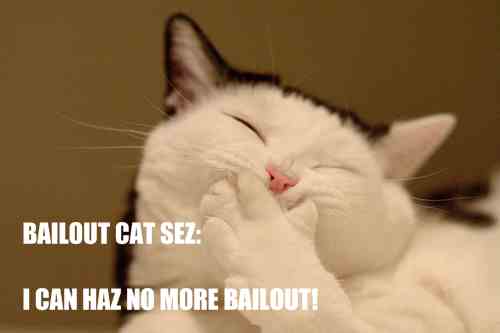When Will the Bailouts Stop? When the Housing Market hits Rock Bottom Prices.
- 0 Comments
This weekend it was announced that the ailing Citigroup would receive additional support from the U.S. government. The initial leaks didn’t appear to be all that fantastic with another typical injection of $20 billion in capital infusions via the U.S. Treasury.   The more troubling item is the U.S. government will now be backing a toxic portfolio of securities “worth” $306 billion. Citigroup must absorb the first $37 billion to $40 billion in losses from this pool. However if [when] losses extend beyond that level, the Treasury will absorb the next $5 billion in losses, followed by the FDIC with $10 billion in losses. Any additional losses would be taken by the Fed (aka the American taxpayer). So let us quickly recap:
$306 billion – $40 billion (Citi) – $5 billion (Treasury) – Â $10 billion (FDIC) = $251 billion at risk to the Fed.
That is correct people. We’ve just been put on the hook for $251 billion in additional losses on top of the capital injections. This is an utter waste of additional money because god only knows what lies in that abyss of funds at Citigroup. It isn’t like they are off loading a portfolio of prime mortgages. We are getting stuff so toxic you need CIA clearance to look at it. The problem with a program like this is that it now ties us to a sinking ship. Think of AIG. What initially started out as a “small” take over has now turned out to a $100+ billion bailout. And there is no assurance they won’t be back to the well.
The market continued the Friday rally but it was based on pure hot air. The housing numbers which largely went unnoticed today had the largest median price drop on record and sales fell right through the floor. This was the amazingly good news mind you. What we are seeing is some serious delusion based investing. We are bouncing off a technical support low and people are somehow thinking this market has now turned around simply because the government has put its lot in with Citi and practically every other large bank on Wall Street. In a 7 hour period the Dow rallied 15%! How’s that for volatility? All this does is assures that the United States taxpayer will be wallowing in horrific zombie banks and institutions for at least a decade.
The question then becomes when will we hit a bottom? A true bottom will be reached when we fix the core of the problem. Housing. First, it is important to understand how much housing is currently available. Let us run the math:
Housing units:Â Â 129,000,000
Vacancy rate:Â Â Â Â 2.8%
Vacant units:   3,612,000
Seasonally adjusted new home sales per year:Â Â Â Â Â Â Â Â Â Â Â Â Â Â Â Â 464,000
Privately owned housing starts annual rate:Â Â Â Â Â Â Â Â Â Â Â Â Â Â Â Â Â Â Â Â Â Â Â 791,000
Existing home sales annual rate:Â Â Â Â Â Â Â Â Â Â Â Â Â Â Â Â Â Â Â Â Â Â Â Â Â Â Â Â Â 4,980,000
Household formation years (25 – 34):Â Â Â Â 39.5 million people forming 19 million households
(65Â – 74 year olds):Â Â Â Â Â Â Â Â Â 11.6 million households
(75Â – 84 year old):Â Â Â Â Â Â Â Â Â Â Â 9 million households
The departure of the 65 – 84 year old market adds to supply about 1.1 million units per year. The 25 to 34 year old group adds a demand for 1.8 to 1.9 million unites each year. So looking at the demographics, you are looking at a net add about 850,000 units while there are an additional 500,000 homes removed from the market simply by being destroyed for a variety of reasons.
The math becomes even clearer here. Homebuilders are looking at adding 791,000 homes annually, 500,000 homes are torn down, 850,000 new households are net added, and you are only pushing the excess inventory down by 559,000 units per year. From 1986 to 2004 the vacancy rate averaged 1.64%.   So to get back to the historical vacancy rate and at the current rate of whittling down 559,000 excess units a year, we have 3 years to go to reach bottom assuming all things remain the same which they will not.
In fact, we may see a lot larger flood of foreclosures adding to the inventory rate. Many times, these sit on the market as vacant homes while lenders try to unload these properties. As the credit markets are tighter, it may be the case that the vacancy rate jumps up a little bit higher. I doubt this however since builders are now pulling back on units being built so the burn rate is getting higher when only in June it was 350,000 per year. Now we are at 559,000 units a year.
The historical price drop also shows what is necessary to get things moving again. We don’t need bailouts, what we need is for prices to come back to Earth.
If you enjoyed this post click here to subscribe to a complete feed and stay up to date with today’s challenging market!
 If you enjoyed this post click here to subscribe to a complete feed and stay up to date with today’s challenging market!
If you enjoyed this post click here to subscribe to a complete feed and stay up to date with today’s challenging market!